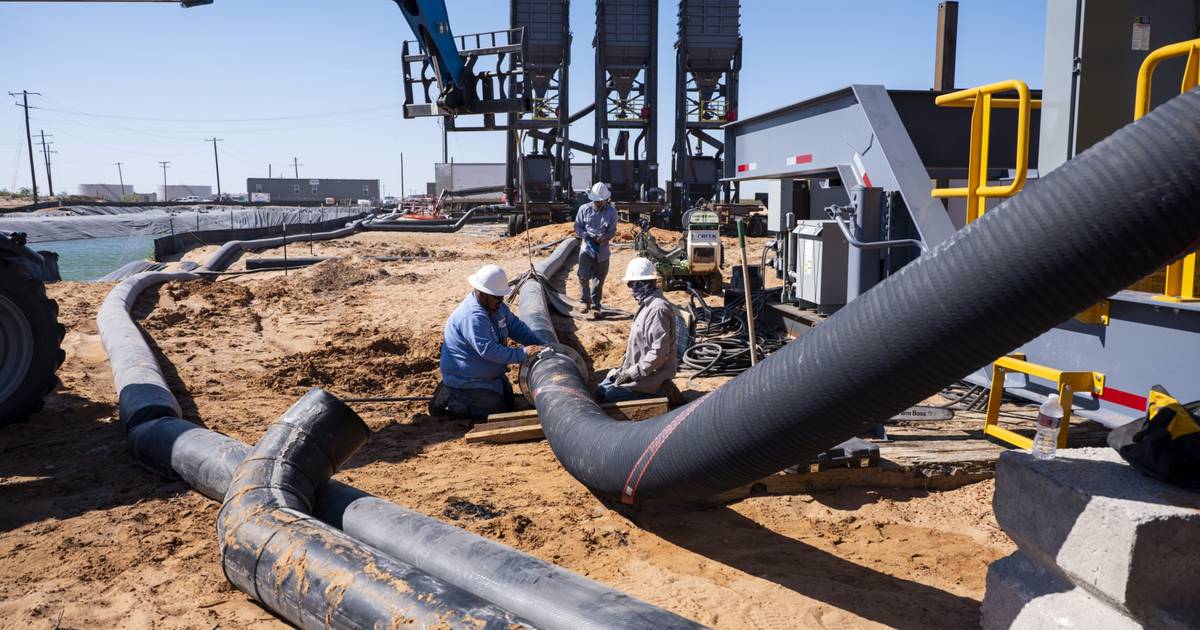Last November, the United States produced 13.3 million barrels per day of oil and condensate. That is the highest level of production that any country has been able to achieve in the entire history of humanity.
The American Union is today the world's leading producer of crude oil and natural gas. It is far ahead of Saudi Arabia, Iraq, the Emirates, Norway, Qatar and Oman. American hydrocarbon exports are comparable to the total production of Saudi Arabia or Russia.
While they enjoy self-sufficiency and energy security, the rest of the world suffers.
The Europeans, due to the supply interruptions caused by the sanctions on Russia, after the invasion of Ukraine, and those that are occurring due to the growing instability in the Red Sea.
The Russians, because they are having domestic supply problems, due to the Ukrainian attacks on their refineries.
China, India and countries in Southeast Asia, as they struggle to meet their growing energy needs. The first two are building hundreds of coal-based power plants, which causes them a serious pollution problem.
The members of the expanded Organization of Petroleum Exporting Countries (OPEC+), because despite the aggressive agreed production cuts, they have not managed to raise prices beyond 70-75 dollars per barrel.
Others, like Mexico and Venezuela, because they have not been able to expand their reserves.
The large foreign oil companies, because the high labor taxes in the North Sea, and those assigned to gasoline and diesel, have collapsed their profit margins, both in production and refining. Also because they do not get the necessary investments to make a shift towards green energy and their shareholders abandon them.
How did they do it?
In September 2008, just 15 years ago, U.S. oil production barely reached 4.0 million barrels a day, the lowest level since 1943, when the labor and resource needs of World War II slowed business.
In October 2008, the first successful horizontal well was drilled in South Texas. The state's production, which was a little more than one million barrels per day in 2008, rose to 3 million in 2012 and today is 5.7 million barrels per day. If Texas were an independent country, it would be the fourth largest producer in the world.
What made the difference was the increase in productivity. Although the number of active wells has fallen 25% in the past 15 months, per-well performance has improved with longer, faster drilling and more efficient pumping.
Capacity has increased markedly since hydraulic fracturing was introduced (fracking), which consists of injecting water and chemicals at high pressure to overcome the resistance of the rock and release gas and oil.
The gas, which was previously burned because it was considered worthless waste, is now used. The Permian Basin of West Texas has extensive deposits of shale, natural gas trapped in rock sediments rich in organic materials.
The industry received a big boost in late 2015, when Barack Obama repealed a ban on crude exports that had been in place since 1975. Producers pressured him because there was not enough capacity to refine the light, sweet oil made from shale. Most refineries were equipped to refine heavy crude oil from abroad.
Because oil and gas from Texas, North Dakota, Colorado and others is not underground on federal lands, it is regulated by each state. State legislators and governors promote laws and public policies to increase output, without much concern for the environmental consequences.
The Environmental Protection Agency (EPA) has few teeth and is subject to hundreds of lawsuits by affected companies. The federal government can, at best, hinder industry development by delaying approval of interstate pipelines or permits for new facilities to export natural gas (LNG).
That is why there is a severe dissonance between the commitments Americans made last year at the UN Climate Change Conference in Dubai (COP-28) and the little that Capitol Hill and the White House are doing to accelerate the energy transition.

